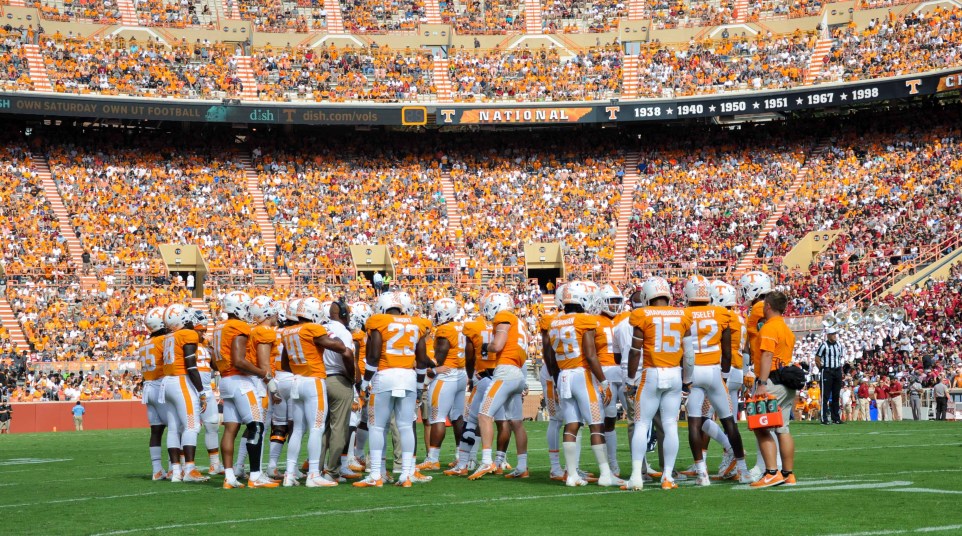
Tennessee could be an elite program with the right coach, but will they hire him?
October is rounding the corner into November. The college football season, which feels like it just started, is coming to a close. Each week gives us a better idea of which hot seat coaches won’t make it to 2018 and, consequently, which prominent jobs will be open.
At this time, the natural tendency is to start ranking those jobs against each other or place them within national tiers of jobs. Every Power 5 school bringing in tens of millions in revenue and plowing it into coaching salaries and facilities has leveled things considerably. Though some programs (Alabama, Ohio State) have much higher potential than others (Vanderbilt, Rutgers).
Trouble comes when comparisons get finer. Every job has strengths and weaknesses. Positions that come available when a coach is fired have had their shortcomings highlighted. We place too much emphasis on the structure of a job vs. the agency of individual coaches. Coaching jobs look far different in perception based on the ability of the resident coaches or even how the team is performing that specific season.
Last season, Michigan lost three games down the stretch by two points in regulation. The Wolverines finished top 5 in SRS. They came an inch from upsetting the Buckeyes, winning the Big Ten East, and having the chance to reach the Playoff. The team sent 11 players to the NFL Draft. This season writers are positing that Michigan winning a title may be an impossibility.
That brings us to Tennessee, the prime SEC job most likely to come open. With Butch Jones making a last stand, his offense has failed to score a touchdown for 3.5 games and counting.
We’ll hear a lot of talk about how limited the Tennessee job is and how Vols fans should mitigate their expectations. SB Nation argued that Nebraska, marooned in the Big Ten West, was a better job. It’s worth asking what precisely has limited Tennessee, besides hiring Derek Dooley and Butch Jones?
Tennessee does have to recruit out of state to compete in 2017. So does just about every school in the country. Alabama’s No. 1 class in 2017 had 21 kids from out of state. Only six of 21 members of Ohio State’s No. 2 class were from Ohio. Ten of the top 11 ranked recruits in the 247 Composite rankings were not.
Alabama and Michigan were in a heated battle for Najee Harris, a running back from Northern California. Even at a school with phenomenal in-state recruiting, Georgia, two of their three Top 40 overall recruits in 2017 were from New York and Pennsylvania.
Recruiting has not been Tennessee’s issue under Butch Jones. His average class ranking nationally is 10.4 under five cycles. He had the No. 4 overall class in 2015. Even with his program in a death spiral, Tennessee’s recruiting class for 2018 ranks in the Top 10.
How much difference can one coaching hire make? From 1997 to 2006 one school was the underdog in 9/10 meetings against Tennessee, went 2-8 straight up against the Vols, and 3-6-1 against that spread. That was Alabama before Nick Saban arrived. Florida was not a power before Spurrier and has not been one since Meyer left. Same deal at Texas. Ohio State has been the stablest program in America in the postwar era, by hiring great coaches and keeping them.
Tennessee is not an elite program now. It has not been for some time. Even the good times, truth be told, could have been a bit better under Phil Fulmer. But, if the Vols get a great coach in there, there is very little limiting them. Whether they can do that, after whiffing on three straight underwhelming hires is another matter. Do yourself a favor and resist the temptation to hop on Jon Gruden at 8-1 before Butch is even out the door.
